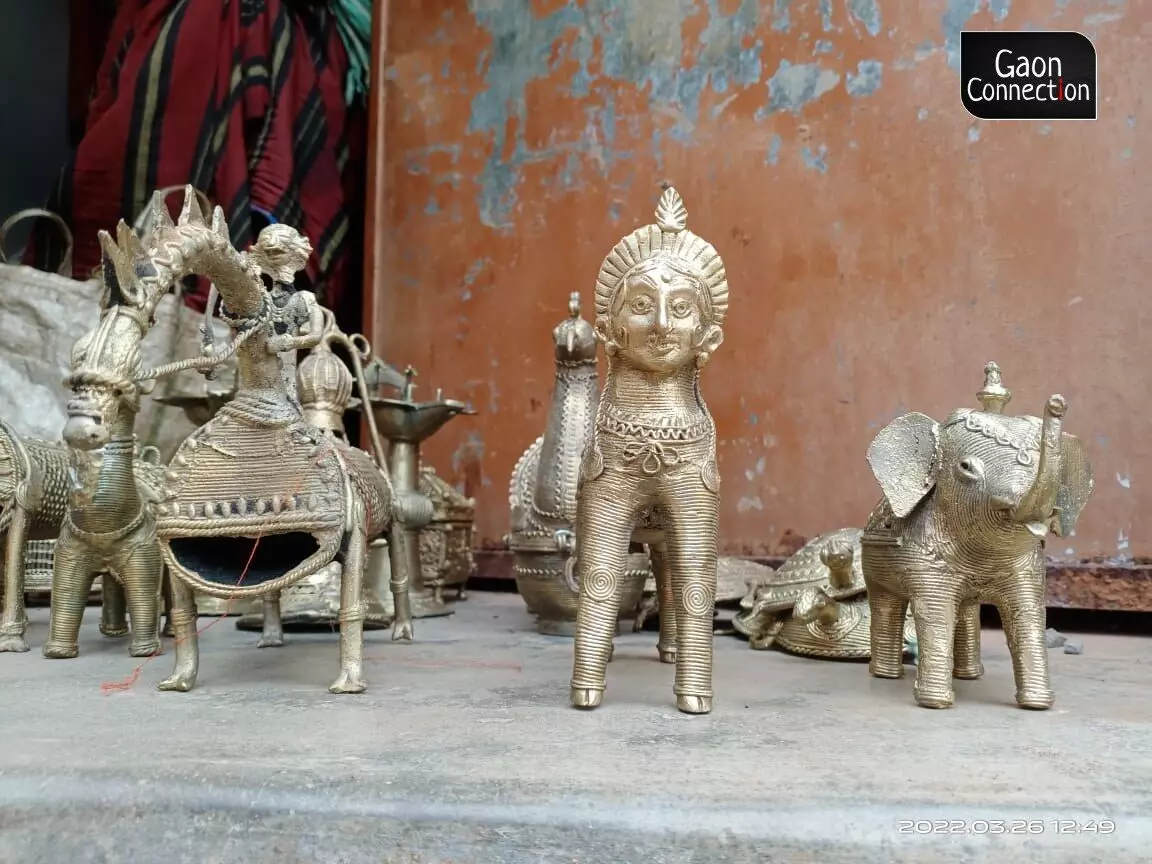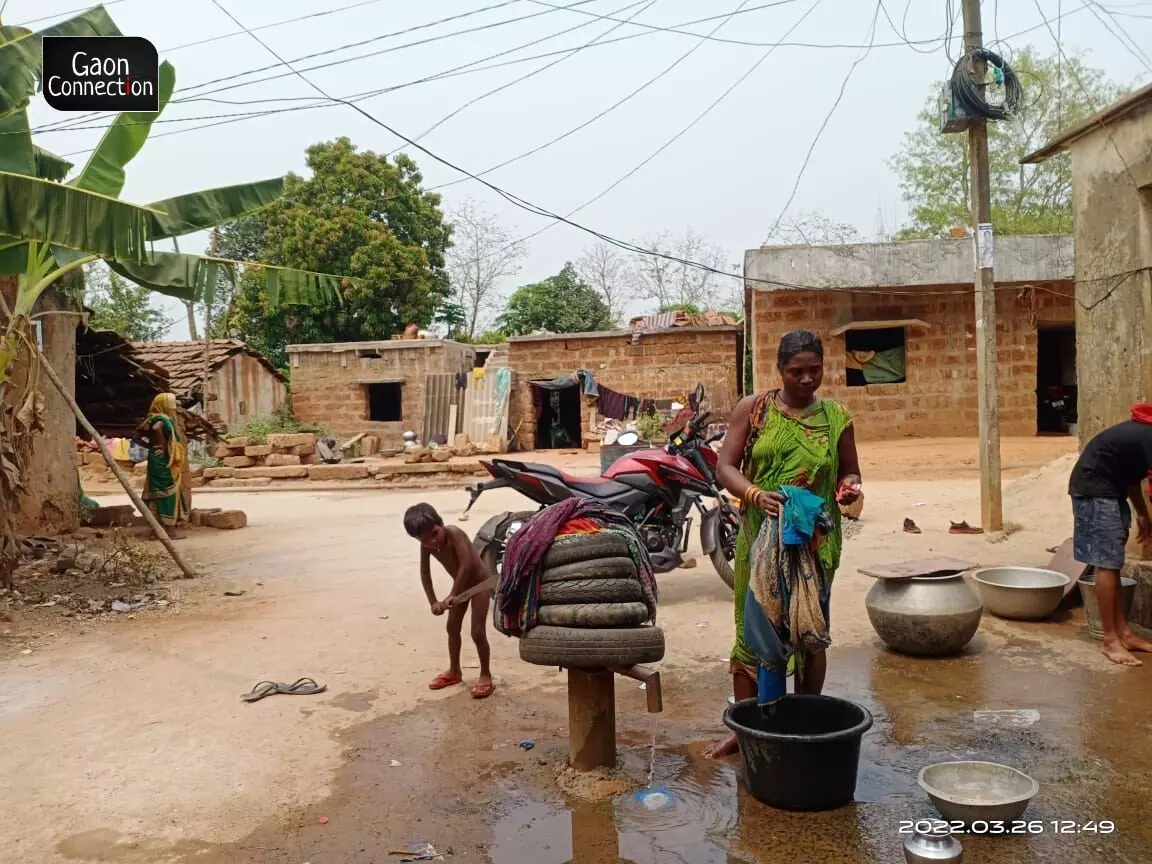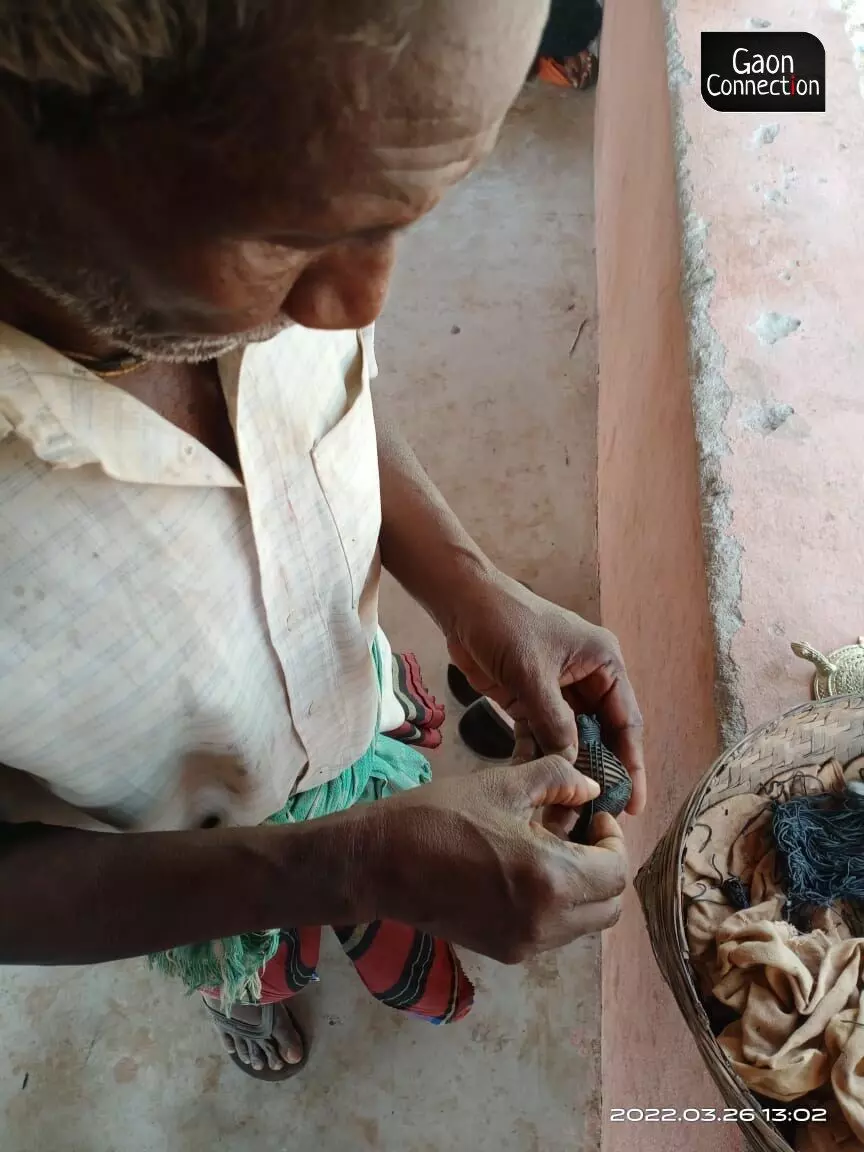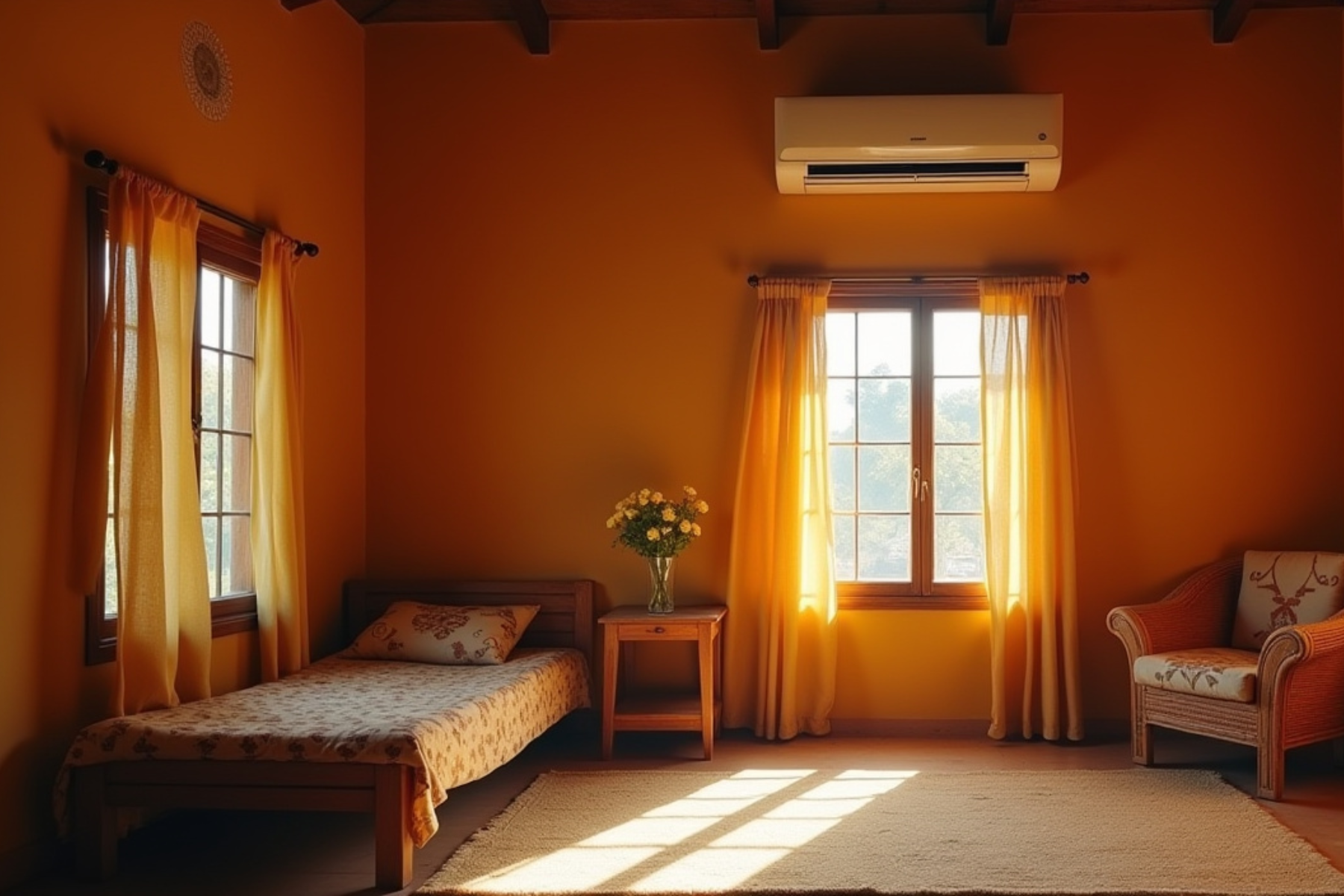Nabajibanpur (Dhenkanal), Odisha
Nabajibanpur, a village of some 160 tribal families in Odisha, is unremarkable in appearance. Poverty-stricken and facing water shortage with just one hand pump for meeting all the water needs, this village in Dhenkanal district is home to an ancient art form, the Dhokra, said to date back to the times of the Indus Valley Civilisation. Dhokra art is named after the Dhokra Damar tribe and its artists are metalsmiths who use a combination of clay and wax moulds to craft their beautiful figurines. The Dhokra art of Odisha differs from the Dhokra art of Chhattisgarh slightly in the method of casting metal, and in the subject matter.
The Dhokra artists of Odisha, such as the residents of Nabajibanpur, make brass figurines of gods and goddesses and mythical beasts while those of the neighbouring Chhattisgarh make human forms.
“For us, art is our connection to traditional folklore and spirituality,” Suman Pradhan, a septuagenarian Dhokra artist of Nabajibanpur, told Gaon Connection.

“Dhokra figurines come in all shapes and sizes, but rising cost of metal [current price of brass is Rs 315 a kg] and decreasing profits have meant smaller and lighter products,” he explained, pointing to the metal figures of turtles, the sun, moon, goddesses, and mythical beasts. “They represent our folklore and mythology, and are very popular with tourists,” Pradhan said.
Also Read: Odisha’s Summer Ramleela returns after 2 years of COVID exile
Odisha’s Dhokra Art: Step-by-step
Pradhan, like the other Dhokra artists, learnt the craft from his parents. It is a craft tradition that has been passed down word of mouth.
Explaining the process of casting the figurines, Pradhan said that the first step was to make a core mould using clay with some holes or ducts in it. Then, the mould was covered in a mixture of beeswax, tree resin and nut oil. Intricate carving is done on the wax when it is still soft. That in turn is once again covered in layers of clay that now has the imprint of the patterns on the wax on its inner surface.
The wax layer is sandwiched between the inner and outer layer of clay. The wax model is then fired, the clay inside melts and drains out of the ducts, and the molten brass is poured into the mould which then takes the shape of the mould.

The liquid metal hardens, the outer layer of clay is then chipped off and the Dhokra figure is ready, to be polished and sold.
The figurines can cost anything between Rs 200 and Rs 2,500, though Pradhan said that bigger figurines were rarely sold. “Despite putting in hours of hard labour, a family of Dhokra artistes can at best earn only Rs 6,000 a month. And that too stopped during the pandemic,” he added.
The marketing challenge
Like it did with hundreds of craftspeople across the country, the pandemic delivered a blow to the Dhokra artists who are already struggling to keep their art alive.
Dhokra artist Abhi Majhi, a resident of Nabajibanpur village, said the meagre rations they got during the pandemic was their only source of sustenance as there was no tourist footfall for the two years.
“There are a lot of government schemes that are announced but nothing has reached us. There was a scheme to provide funds for the construction of pucca houses under the Biju Awas Yojana, but nothing came of it,” Abhi Majhi told Gaon Connection. “Many artisans shifted to doing menial jobs in towns,” he added. Representations and complaints to authorities had fallen on deaf ears, Gurbari Majhi, another Dhokra artist, claimed.
There was a glimmer of hope when the Odisha government constructed an exhibition hall at Nabajibanpur in 2018, to promote Dhokra art. However, the hall has remained shut all these years.
Also Read: Reviving the scent of the Kewda flowers
According to Pradyumana Rath, who researches on heritage art and historical monuments of Dhenkanal district, the exhibition hall was built as an initiative by the state government to make these artists self-sufficient.

“The idea was it could become a meeting place for artists and art curators. If it opened, artists wouldn’t have to travel to distant metros to sell their work. The distances and the expenses are also reasons why the survival of Dhokra art is in peril,” Rath told Gaon Connection.
Gurbari Majhi said that she was sure that once the exhibition hall began operating, the artists would be able to move forward and not have to be at the mercy of indifferent government officials and middlemen.
“The hall would be a meeting place where the artists could interact with tourists, entrepreneurs and curators directly,” Gurbari said. “Exhibitions could go on in this hall long enough for people to come and see our art and how we create it. We would not have to exist as mere beneficiaries of the state. We could be independent,” she reiterated.
But, the sprawling premises of the exhibition hall remain deserted.
“I cannot say anything about why there has been a delay in opening up the hall,” Saroj Kumar Sethi, district collector Dhenakal, told Gaon Connection. But, we are going to organise some programmes and fairs to promote this art,” he promised.
Keeping the art alive
Meanwhile, the older Dhokra artists are finding it difficult to motivate the younger generation to learn the art.
“I want to be a soldier and serve my country,” declared Shubhankar Gadatia, a class eighth student, who said he liked watching Bollywood movies on the subject of war. Both his parents are Dhokra artists. “Also, I don’t understand much of it. The process of making it is too complex for me,” he confessed to Gaon Connection.

“Right now the art does not seem like a viable livelihood option. But, if the children could see their family making profits, they might be interested in pursuing the art,” said Suman Pradhan. According to him, opening of the exhibition hall would be a game changer. “It will be a great step in preserving the art form,” he concluded.




















